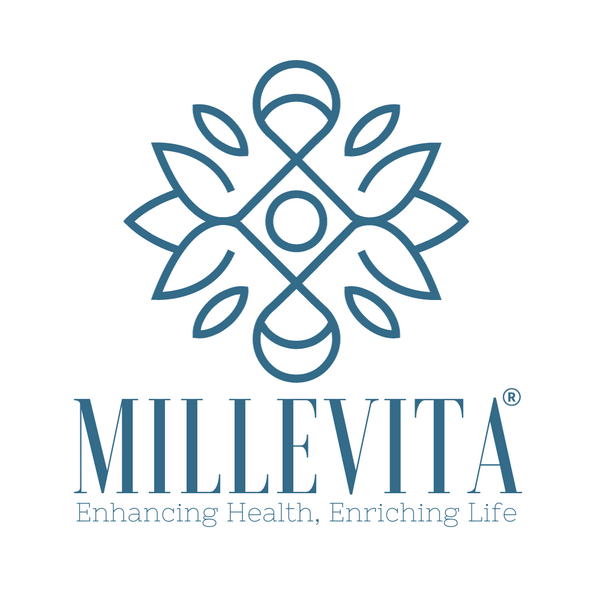
How to Protect Your Muscle Health as You Age
Share
You're Not Falling Apart—You're Just Running Low on Muscle
Let’s clear something up right away: feeling stiff, slower, or weaker isn’t just “getting older.” It’s often muscle loss—and it’s more common than you think.
It creeps in quietly. You lift fewer things. You take the elevator instead of the stairs. A little less movement each day… and soon your strength feels like it’s slipping away.
This isn’t alarmist. It’s a reality check.
Age-related muscle loss—also known as sarcopenia—affects nearly everyone, but that doesn’t mean you’re stuck with it. You don’t need extreme workouts or heavy weights to push back. But let’s be honest: casual strolls won’t cut it either.
In this guide, we’ll unpack the real causes of muscle decline, what science says works, and simple steps you can take to stay strong, capable, and confident in your body—at any age.
It’s not about fear. It’s about facts. And action.
Let’s begin.
Why Muscle Loss Deserves Your Attention
Here’s the thing—most people don’t realize they’re losing muscle until everyday tasks get harder. One day you’re lifting groceries with ease; the next, tying your shoes leaves you winded. It doesn’t hit all at once—it builds slowly, and then it’s hard to ignore.
But muscle loss isn’t just about strength. It affects how you move, how steady you feel, and how long you can stay independent. From climbing stairs and lifting laundry to standing up from the floor or opening jars—it all takes muscle.
Here’s what tends to decline when muscle does:
- Balance & stability: Less muscle means more risk of falls.
- Metabolism: Muscle keeps your metabolism humming. Lose it, and things slow down.
- Bone support: Muscle protects bones—fewer strains, fewer fractures.
- Energy levels: You may feel more tired, with less stamina for daily life.
- Blood sugar control: Yes, your muscles help regulate insulin and glucose.
This isn’t about building bulk—it’s about staying capable. Keeping your muscle means keeping your independence, your energy, and your confidence.
The takeaway? Muscle matters more than you think—especially as you age.
Why Muscle Loss Deserves Your Attention
Here’s the thing—most people don’t realize they’re losing muscle until everyday tasks get harder. One day you’re lifting groceries with ease; the next, tying your shoes leaves you winded. It doesn’t hit all at once—it builds slowly, and then it’s hard to ignore.
But muscle loss isn’t just about strength. It affects how you move, how steady you feel, and how long you can stay independent. From climbing stairs and lifting laundry to standing up from the floor or opening jars—it all takes muscle.
Here’s what tends to decline when muscle does:
- Balance & stability: Less muscle means more risk of falls.
- Metabolism: Muscle keeps your metabolism humming. Lose it, and things slow down.
- Bone support: Muscle protects bones—fewer strains, fewer fractures.
- Energy levels: You may feel more tired, with less stamina for daily life.
- Blood sugar control: Yes, your muscles help regulate insulin and glucose.
This isn’t about building bulk—it’s about staying capable. Keeping your muscle means keeping your independence, your energy, and your confidence.
The takeaway? Muscle matters more than you think—especially as you age.
How to Prevent (and Reverse) Muscle Loss
This is where things change. Muscle loss may be gradual—but it’s not inevitable. With the right habits, you can protect your strength, restore what’s been lost, and move forward feeling more capable than ever.
Here’s your clear, evidence-based action plan:
1. Prioritize Strength Training
Muscle needs resistance to grow—and to stay. Whether it’s bodyweight exercises, resistance bands, dumbbells, or machines, the key is consistency. You don’t need to lift heavy, but you do need to challenge your muscles regularly.
Try this: Strength train 2–3 times per week, focusing on major muscle groups: legs, core, back, and chest.
2. Make Protein a Daily Priority
Protein is essential for maintaining and rebuilding muscle. As we age, our bodies become less efficient at using it—so quality and timing matter more than ever.
Try this: Aim for 25–30g of protein with each meal. Think eggs, legumes, poultry, fish, tofu, or a good-quality protein shake.
3. Move More Throughout the Day
Structured workouts are important—but so is what you do between them. Extended sitting sends the wrong message to your muscles. Gentle, frequent movement keeps your system activated and your inflammation in check.
Try this: Walk, stretch, garden, stand often, and add light activity to your routine. Every bit counts.
4. Rest and Recover Intentionally
Muscle isn’t built during workouts—it’s built during recovery. Sleep, rest days, and stress reduction all play a critical role in maintaining muscle health.
Try this: Aim for 7–9 hours of sleep. Take rest days seriously, and use tools like breathwork, light stretching, or mindfulness to manage stress.
5. Use Supplements Strategically
Whole foods come first—but the right supplements can support your progress, especially if your diet has gaps or your body needs extra support.
- Creatine: Supports muscle strength and energy production—well-studied and safe.
- Vitamin D: Essential for mu
Your Simple Weekly Strength Plan
You don’t need a complicated schedule or a celebrity trainer. What you need is a repeatable routine that supports strength, mobility, and consistency—without taking over your life.
This plan gives you structure without stress. Adjust as needed, and aim for progress, not perfection.
| Day | Activity | Focus |
|---|---|---|
| Monday | Upper Body Strength | Push, pull, core work (30–45 mins) |
| Tuesday | Walking + Stretch | 5,000–8,000 steps + 10 mins mobility |
| Wednesday | Lower Body Strength | Squats, lunges, glutes (30–45 mins) |
| Thursday | Active Recovery | Light walk, yoga, or mindful movement |
| Friday | Full-Body + Core | Mix of upper/lower + core finisher |
| Saturday | Fun Movement | Bike, swim, garden—your choice |
| Sunday | Rest & Reset | Stretch, meal prep, recharge |
This is a flexible guide, not a rigid schedule. Miss a day? Modify. Only have 20 minutes? That counts. What matters most is consistency over time.
Final Thoughts
Muscle loss isn’t a sign of failure—it’s your body’s natural response to inactivity and missed signals. The good news? You can change that, starting now.
You don’t need perfect form, expensive equipment, or to look like a fitness model. What you need is consistency, commitment, and a mindset that says, “I’m in this for me.”
Begin where you are. Progress at your pace. And remember—strength isn’t just physical. It’s in the decision to keep moving forward, even when it’s tough.
You’re not behind. You’re not too old. You’re right on time to take control of your health and strength—for the long haul.
Disclaimer
This article is intended for informational purposes only and should not be considered medical advice. Always speak with your doctor, healthcare provider, or qualified professional before making significant changes to your exercise, diet, or supplement routine—especially if you have an existing condition, injury, or are on medication.
Prioritize safety. Trust your body. And when uncertain, consult the experts.
References
- https://academic.oup.com/ageing/article/51/2/afac003/6527381?login=false. Retrieved June 19, 2025.
- https://journals.lww.com/co-rheumatology/abstract/2012/11000/sarcopenia_in_older_adults.7.aspx. Retrieved June 19, 2025.
- https://link.springer.com/article/10.1007/s00198-014-2895-y. Retrieved June 19, 2025.
- https://link.springer.com/article/10.1007/s40520-019-01146-1. Retrieved June 19, 2025.
- https://onlinelibrary.wiley.com/doi/full/10.1002/jcsm.13619. Retrieved June 19, 2025.
- https://research.unimelb.edu.au/strengths/updates/news/good-diet-and-regular-resistance-based-exercise-key-to-retaining-muscle-strength-as-we-age. Retrieved June 19, 2025.
- https://www.frontiersin.org/journals/nutrition/articles/10.3389/fnut.2020.00025/full. Retrieved June 19, 2025.
- https://www.frontiersin.org/journals/physiology/articles/10.3389/fphys.2024.1496544/full. Retrieved June 19, 2025.
- https://www.frontiersin.org/journals/sports-and-active-living/articles/10.3389/fspor.2022.950949/full. Retrieved June 19, 2025.
- https://www.garvan.org.au/news-resources/news/vitamin-d-deficiency-may-impair-muscle-function. Retrieved June 19, 2025.
- https://www.health.gov.au/topics/physical-activity-and-exercise/physical-activity-and-exercise-guidelines-for-all-australians/for-older-australians-65-years-and-over. Retrieved June 19, 2025.
- https://www.health.harvard.edu/staying-healthy/muscle-loss-and-protein-needs-in-older-adults. Retrieved June 19, 2025.
- https://www.health.harvard.edu/staying-healthy/preserve-your-muscle-mass. Retrieved June 19, 2025.
- https://www.mdpi.com/2072-6643/15/18/4073. Retrieved June 19, 2025.
- https://www.mdpi.com/2072-6643/17/2/282. Retrieved June 19, 2025.
- https://www.nature.com/articles/s41598-020-76185-0. Retrieved June 19, 2025.
- https://www.nia.nih.gov/news/how-can-strength-training-build-healthier-bodies-we-age. Retrieved June 19, 2025.
- https://www.sciencedirect.com/science/article/abs/pii/S0749379703001776. Retrieved June 19, 2025.



